I dug through the Rapid archives all the way back to 2006 to find my original review of the revolutionary Esquif Zephyr.
Esquif Zephyr 2.0 XL
Material: T-Formex
Length: 11 ft 3 in
Width: 30 in
Depth: 16 in
Capacity: 325 lbs
Price: Solo $2,020 USD // $2,230 CAD ||
Tandem $2,340 USD // $2,580 CADesquif.com
Fourteen years ago, Jacques Chassé, the founder and owner of Esquif Canoes, was on a tear, collaborating with the who’s who of solo open boating. Chassé and his team were cranking out new models almost every spring. As Quebec rivers melted, we came to expect new, progressively shorter and more aggressive whitewater canoes from Esquif’s Frampton factory. The Nitro, Detonator and then Andrew Westwood’s Zoom—one of my favorite boats of all-time. They were followed by the Chassé, Westwood, Paul Mason, Joe Langman and Mark Scriver creation, the Taureau. Then, all of a sudden, scratch the needle off the vinyl record, Chassé released the full-bodied, 11-foot, three-inch Zephyr.
Esquif took the speed, stability and dryness offered by a larger hull and added advances Chassé and his team had made in areas such as chine and flare developed for the smaller boats to produce the Zephyr.
People said the Zephyr was Esquif’s answer to the popular Dagger Rival. A younger, sassier version of me wrote the Zephyr was a Zoom with training wheels. Whatever it is, 14 years later, the Zephyr has proven to be one of Esquif’s top-selling solo canoes.
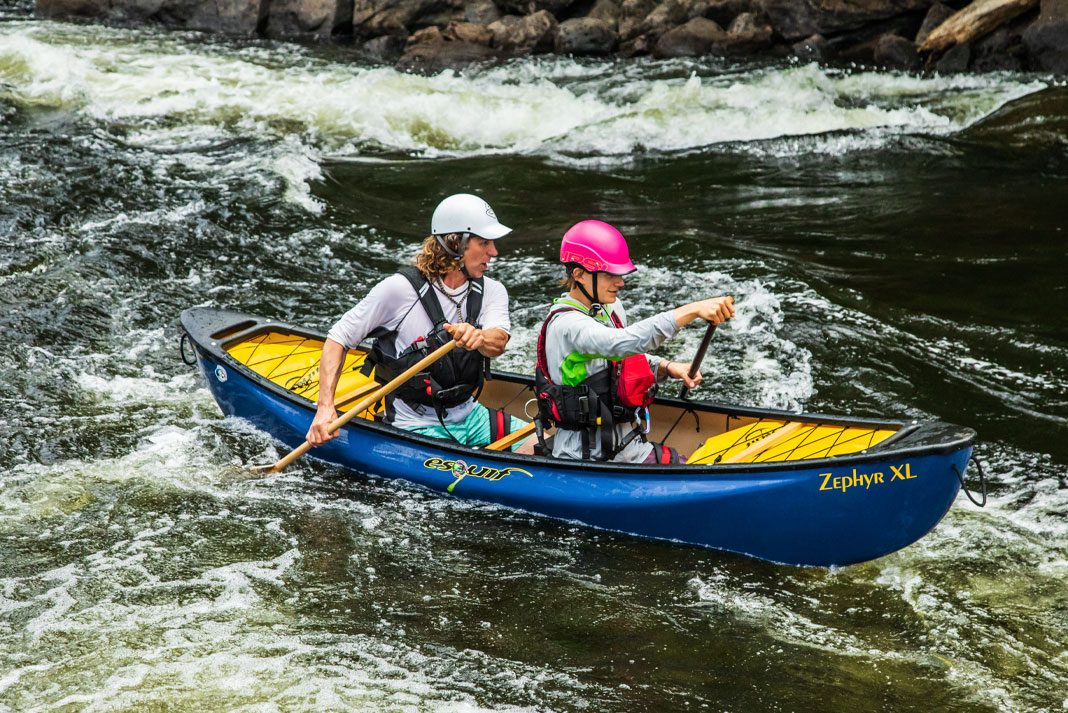
The Esquif Zepher 2.0 XL is slightly bigger. For bigger dudes. For bigger water. For bigger fun.
Usually, an XL version of something is extra, larger. And usually, a 2.0 version is a complete update. The Zepher 2.0 XL is neither, really. So, what gives?
The XL is the same length, 11 feet and three inches long. Same as the original Zephyr. However, the XL is an inch wider. An inch doesn’t seem like much, but it ups the capacity from 220 to 325 pounds. It means the XL feels to a 200-plus paddler like the Zephyr does to someone smaller than me. Or it means I can pack a weekend of gear for a solo backcountry mission.

The original Zephyr was available only in Esquif’s proprietary Twin-Tex material. Twin-Tex is a matte black woven material marrying together fiberglass fabric with melted polypropylene plastic instead of resin. It was lighter than Royalex, but it is a pain in the ass to outfit—anchors always seemed to peel. And Twin-Tex is harder to fix.
The 2.0 in the new Zephyr 2.0 and 2.0 XL represents the big switch from Twin-Tex to T-Formex, Esquif’s own version of a plastic laminate now used in most of their whitewater solo canoe line-up. Due to material supply issues as a result of COVID-19, the Zephyr in Twin-Tex was not available in 2020. But it will be back.
While Esquif sells more 2.0s than XLs, and more solo set-ups than tandem, for testing I borrowed a 2.0 XL already outfitted with tandem foam pedestals. Just to be different.
It’s cozy in the cockpit with two paddlers.
My son Doug and I are so close I could give him wet willies without leaning forward. I had to shorten my forward stroke and there was no chance of sneaking stern cross-draws or cross-forwards without clipping him upside the head on the way over. My 175 pounds and Doug’s 130 pounds placed us perfectly within the maximum listed capacity.
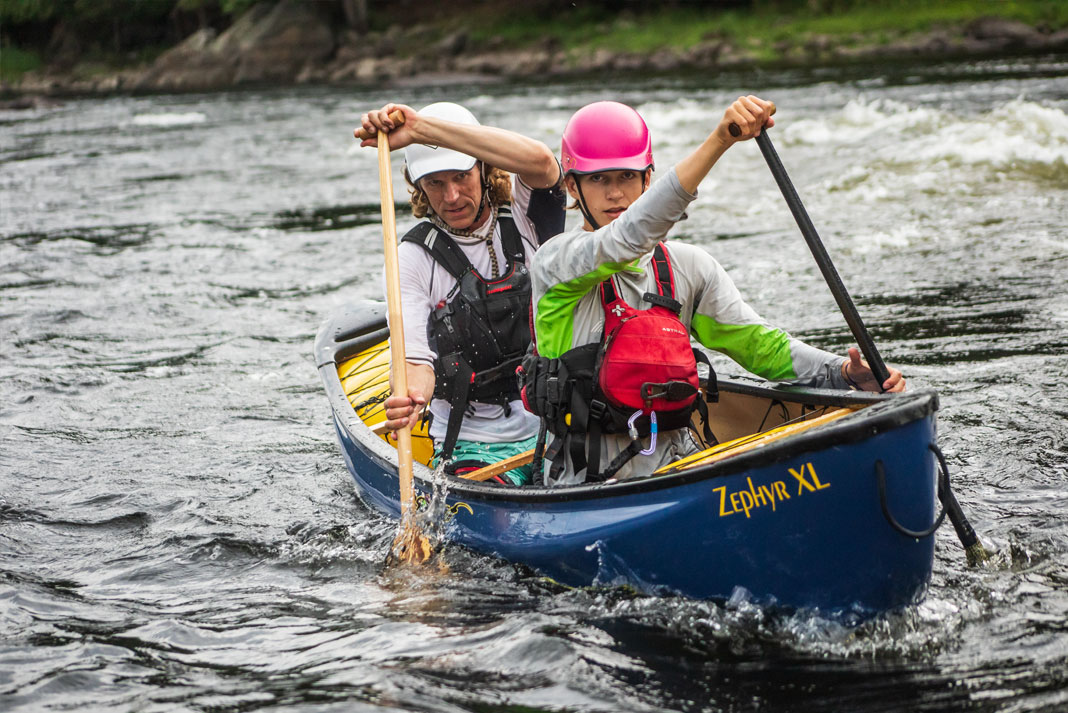
Bow partners have accused me of trying to stuff big boats into small eddies. Too small of eddies, in fact.
“Think we can hit that one?” I ask, already on my way charging for it.
There’s something magical about a well-synchronized tandem team and 11 feet of plastic snapping into 12 feet of calm water between a rock wall and raging current. It’s not for everyone, I’ve learned. But if it’s for you, buy yourself the Esquif Zepher 2.0 XL with two foam saddles and a spiderweb of straps. Doug and I had a blast in this boat—not to be confused with Esquif’s actual 13-foot tandem, the Blast.
Years ago, Jacques Chassé told me he wanted to impart the responsiveness of his Zoom into a hull with the stability demanded by intermediate paddlers. The chines, though softer than those on the Zoom, still allow for effective carves and off-side tilts. The Zephyr is not a pig to paddle because the narrow bow of the asymmetrical hull and the dramatic tumblehome of the gunwales mean you don’t have to reach out over the boat to get your paddle in the water.
The sharper bow entry point, longer waterline and slightly rounded hull—as opposed to the truly flat hulls of the Nitro or Detonator—combine to create a boat that accelerates with only a stroke or two and carries speed deep into eddies, especially with a tandem team driving it.
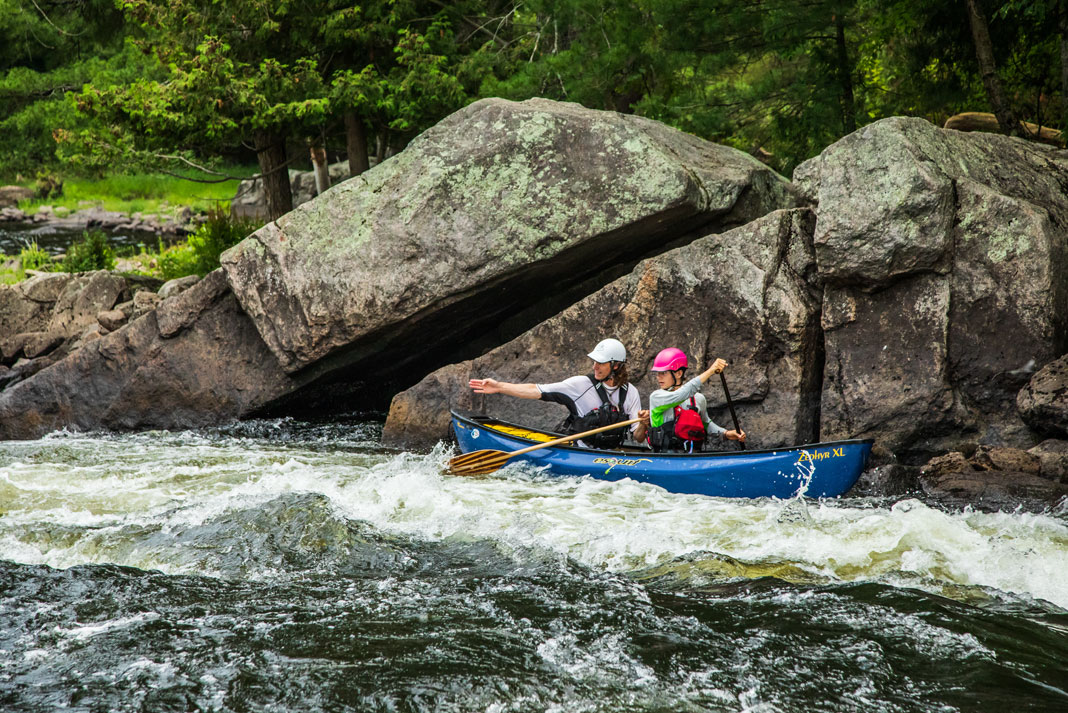
To achieve a cushy secondary stability that stops the boat dead when the gunwales are about six inches above the waterline, Chassé kept the dramatic mix of flare and tumblehome. The mid-ship flare gives you something to rest on while the boat is carving or pivoting. The tumblehome brings the gunwales safely back from the water to produce a reasonably dry ride.
Sometimes you don’t need to reinvent things. Sometimes you can just make them bigger and better. And that’s the Zephyr 2.0 XL.
Paddle the XL solo or tandem. Load it with gear for wilderness river solo adventures. Dress it up with wood trim. Paddle it for another 14 years. So many options.
If you think a Zephyr re-release is Chassé getting lazy in the R&D department, don’t forget about Esquif’s nine-foot Extasy creeker, a collaboration with Sabrina Bram, the world’s first female whitewater open boat designer. And then the larger boy version, the Excite, a year later.
Chassé is not getting lazy; he’s doing what he’s always done at Esquif—giving discerning paddlers like Scriver, Mason, Westwood, Bram and you and me exactly what we want.
This article was first published in Paddling Magazine Issue 62. Subscribe to Paddling Magazine’s print and digital editions here, or browse the archives here.
Just the two of us, we can make it if we try. | Photo: Michael Hewis




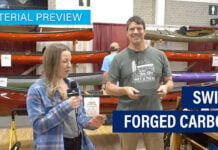
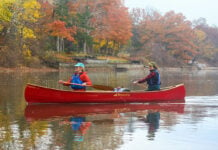
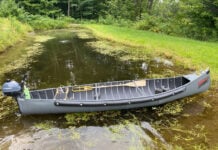

Thanks! Sounds like fun. How heavy are the zephyrs? (1.0, 2,0, xl, twin Tex, etc?)
My old MR Outrage is about 60lbs now after repairs and replacements